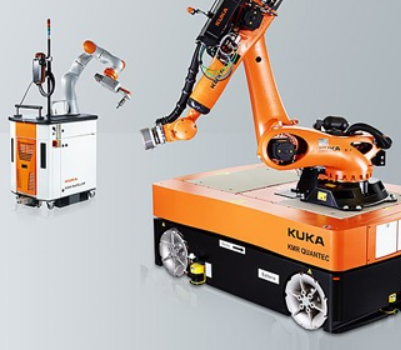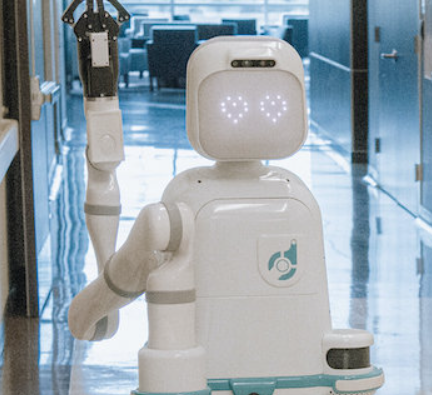
As factories become increasingly complex and demand for faster, more precise operations rises, mobile robotic systems are stepping into the spotlight. These agile, intelligent machines are transforming the way manufacturing plants operate, offering not just efficiency but also tangible environmental benefits. From internal logistics to quality control and even sustainability initiatives, mobile robots are redefining what modern production looks like.
Understanding the Role of Industrial Mobile Robots
Industrial mobile robots are autonomous systems used in manufacturing to perform tasks such as moving goods, handling fragile components, inspecting products, and managing workflows. Unlike traditional equipment, these robots adapt to changing surroundings and work independently, making them ideal for sectors like electronics, pharmaceuticals, and automotive manufacturing.
Navigating Smart: How These Robots Move
What makes these robots especially impressive is their navigation capability. They employ a combination of LiDAR sensors, GPS, vision systems, and real-time processing software to maneuver safely through factory floors. This allows them to dynamically adjust routes, avoid obstacles, and stay efficient without needing manual guidance.
Industries Taking the Lead
Recent data shows that three sectors have become the biggest adopters of robotic solutions in manufacturing:
- Electronics & Electrical Manufacturing: Leading the way in adoption, this sector uses robots extensively for assembling appliances, producing microchips, and managing high-volume component handling.
- Automotive: Although it once dominated robot usage, the automotive industry now ranks second. Robots here are used for welding, parts transfer, and assembly line automation.
- Metal & Machinery: This sector has steadily increased its use of robots for heavy-duty applications, including fabrication, tooling, and machine loading.
Real-World Applications in Modern Factories
Industrial mobile robots are being deployed in increasingly advanced roles across manufacturing environments. Here are five standout use cases:
- Autonomous Material Transport: Mobile robots are frequently used to transfer materials across different production zones. Their ability to select optimal paths on the fly helps speed up operations and reduce downtime.
- Precision Handling of Fragile Parts: In industries like electronics, where microcomponents require delicate handling, mobile robots equipped with fine-tuned manipulators can pick and place parts with millimeter-level accuracy.
- Automated Quality Inspections: Fitted with high-resolution cameras and sensor arrays, these robots can inspect finished products for defects. They outperform manual checks in both speed and consistency.
- Construction Support Roles: Though still emerging in construction, mobile robots are already being used for material transport, site scanning, and safety monitoring.
- Pharmaceutical Applications: In labs and production facilities, robots handle chemical substances and medications, supporting both safety and operational efficiency.
These examples highlight just a fraction of how mobile robotics is being integrated into a diverse range of industries beyond traditional manufacturing, such as retail, aerospace, and waste management.
Sustainability Through Smarter Automation
While building and operating mobile robots does come with some environmental cost, they offer significant benefits in promoting greener manufacturing practices. Here’s how:
- Reduced Waste: Precision in operations means fewer production errors and less material waste. Robots help maintain consistent quality, avoiding rework and unnecessary resource usage.
- Energy Efficiency: Many mobile robots are engineered to use power more effectively. Some can even recharge autonomously, further optimizing energy use across shifts.
- Lower Emissions in Logistics: By replacing conventional transport methods like forklifts or motorized carts, mobile robots help cut down on emissions inside factories. Their intelligent route planning also minimizes needless movement.
- Recyclable Materials: The robotics industry is moving toward using more sustainable and recyclable materials in robot construction. Manufacturers are investing in more durable and environmentally friendly components.
These innovations support broader sustainability goals and reflect a shift toward cleaner, smarter production systems.
Paving the Way to Greener Manufacturing
Today’s industrial robots do more than just increase output—they represent a step forward in responsible automation. By integrating technologies like AI, IoT, and data analytics, smart factories are able to fine-tune their energy use, adapt workflows on the fly, and trace materials from start to finish with greater accuracy.
This shift isn’t just about keeping up with global competition. It’s about redefining success in the industrial world—where environmental responsibility and productivity go hand in hand. Mobile robotics stands at the center of this movement, providing the agility and intelligence needed to build a future where manufacturing is not only efficient but also sustainable.
In the era of Industry 4.0, mobile robots are doing more than transforming workflows—they’re helping industries reinvent themselves for a greener tomorrow.












